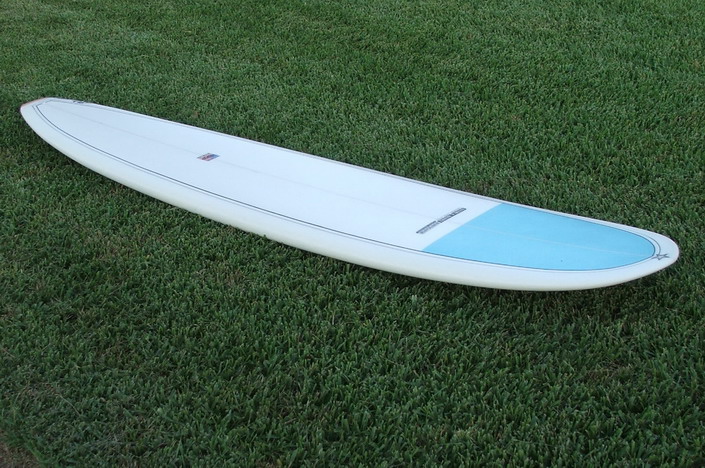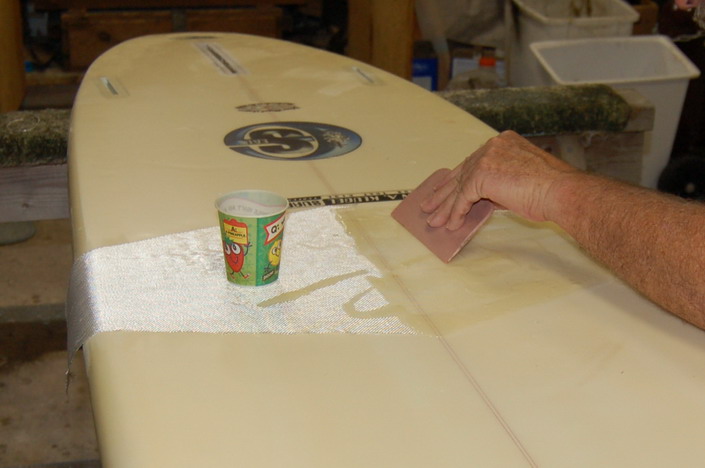|
CFLsurf Home Page || About
this Site || Photo
Galleries || Surf
the Web || Return
to Repair Series Page
Part 1 of Ross's Famous Surfboard Repair Series
Broken Board Repair 101 - The Basics
|
This page will guide you step by step through the process of repairing
your broken surfboard. Coupled with the other webpages of Ross's
Famous Surfboard Repair Series, this presentation is believed to
provide the most comprehensive coverage of surfboard repair that
you can find on the Internet. |

|
The above photo shows the board featured on this page the day it arrived new in July, 2005. We'll use this picture for a comparison with what it looks like after the repair is completed. This is a custom made 9'6" epoxy longboard with two layers of cloth (6 oz) on the bottom and three layers of cloth on the deck (two 6 oz and one 4 oz). When new, it weighted 14.0 pounds without the fins. |
|
Here it is again on November 8, 2006 after getting pounded in the high tide shore break. This is a very clean break. Sometimes a large section of the laminate gets pealed off with the break. Since epoxy is more flexible than polyester, the damage to this board was confined to the immediate area of the break. The top deck remained intact except for torn rails. |
|
The first step is to allow the board to thoroughly dry out. Secure
it such that the break is slightly open and exposed to the air, facing
downward so any water can drip out. A fan directed toward the open break
speeds up the drying process. Don't skip this step. If the board is
soaked, the dry out period can easily take a week or longer. |
|
The next step is the most important and often the most difficult -
alignment. Perfect alignment is CRITICAL. There are several ways to
do this. In the past I always used masking tape to attach four wood
splints. This time I decided to try clamps. The clamps should be placed
close to the break to avoid misalignment due to the curvature of the
board. Also, use wood splints on both the deck and bottom so you don't
damage the board. For this break, I had to trim some of the broken laminate
and stringer in order to get good alignment. Even after trimming, it
took the force of the clamps to pull up the rails so that they aligned
correctly. Be careful not to over tighten the clamps and crush the board.
Take your time and get the alignment right. |
|
After any necessary trimming to assure that the two sections will align easily and quickly, loosen the clamps and move them out of the way just enough to provide room for sanding. I used a power sander with 60 grit dry paper. Sanding can be done by hand, but it's a lot quicker and easier with a power sander. Take down any high edges and rough up the surface several inches to each side of the break in order to provide a good grip for the patch and filler that will be applied in the next step. Be sure to sand any low areas in the break so that the filler will have a good grip. Don't oversand and eat all the way through the surface laminate except for high spots that need to be taken down. |
